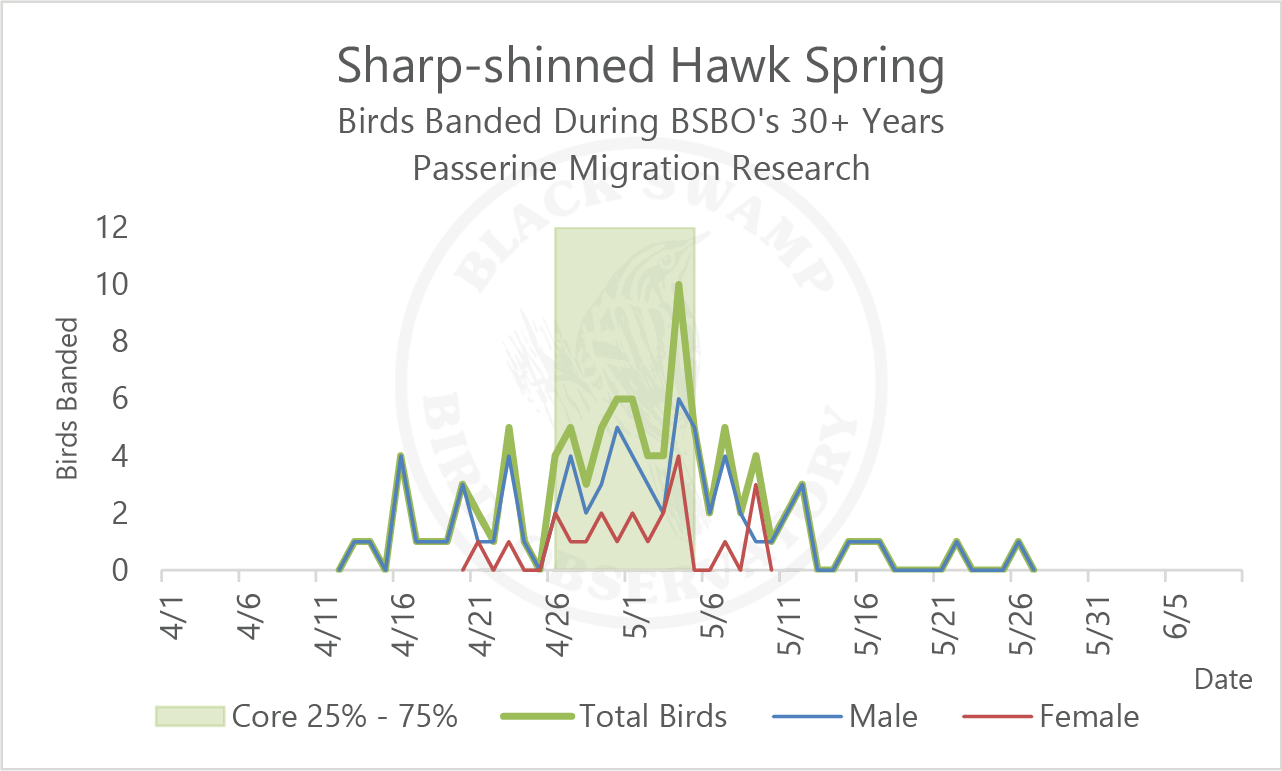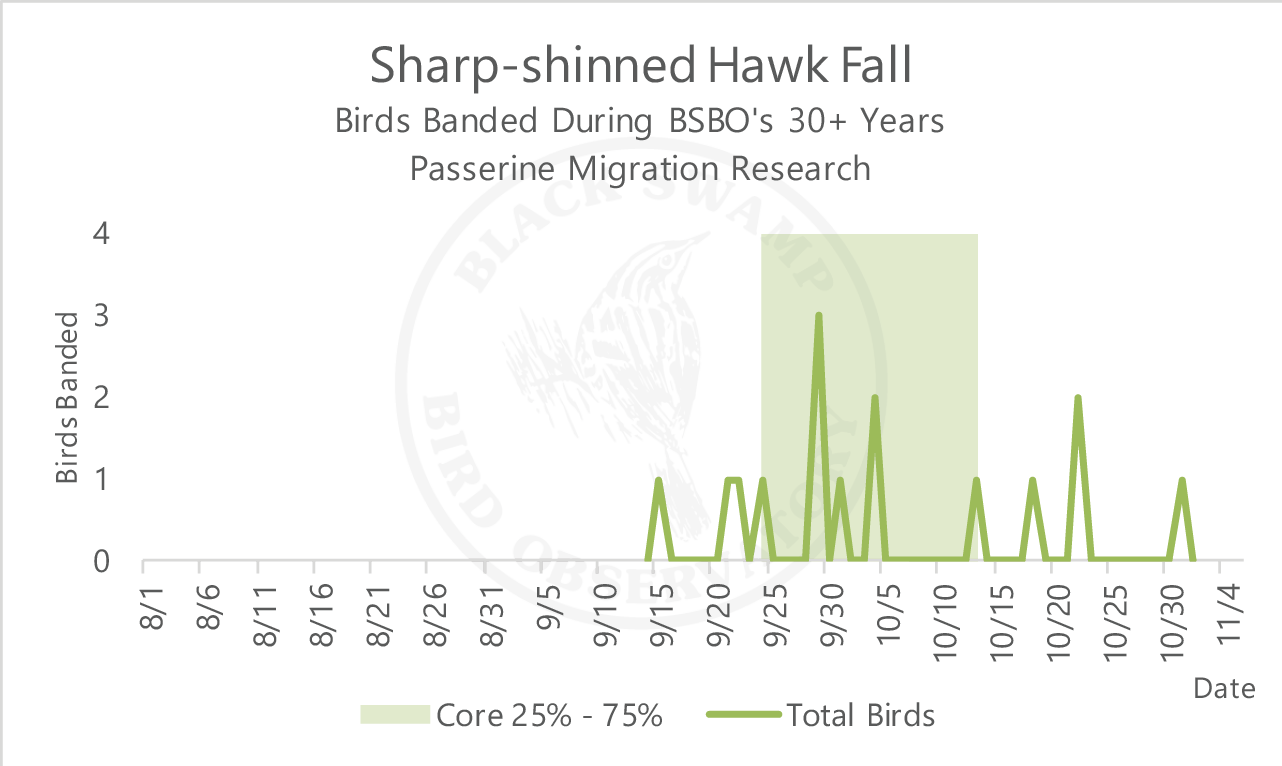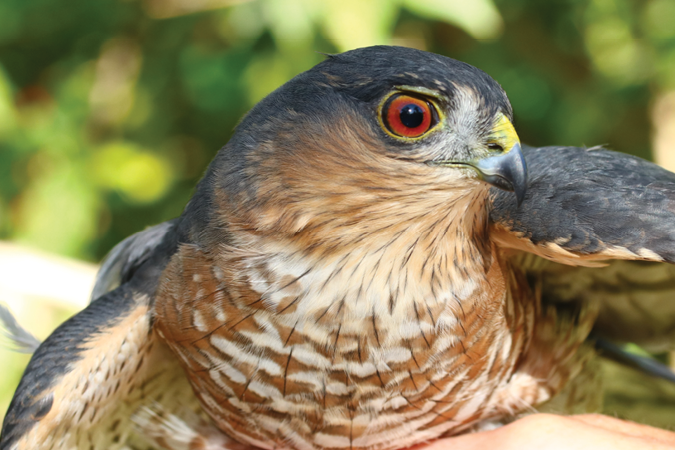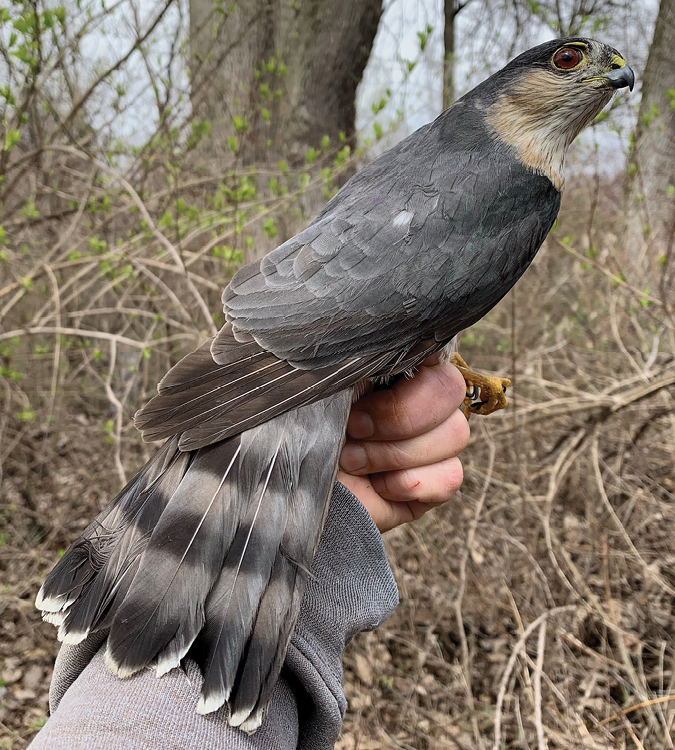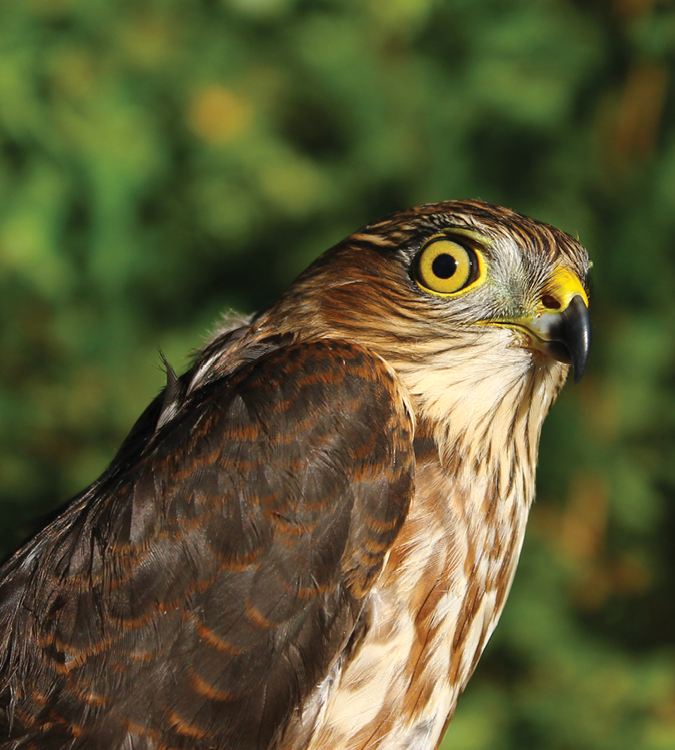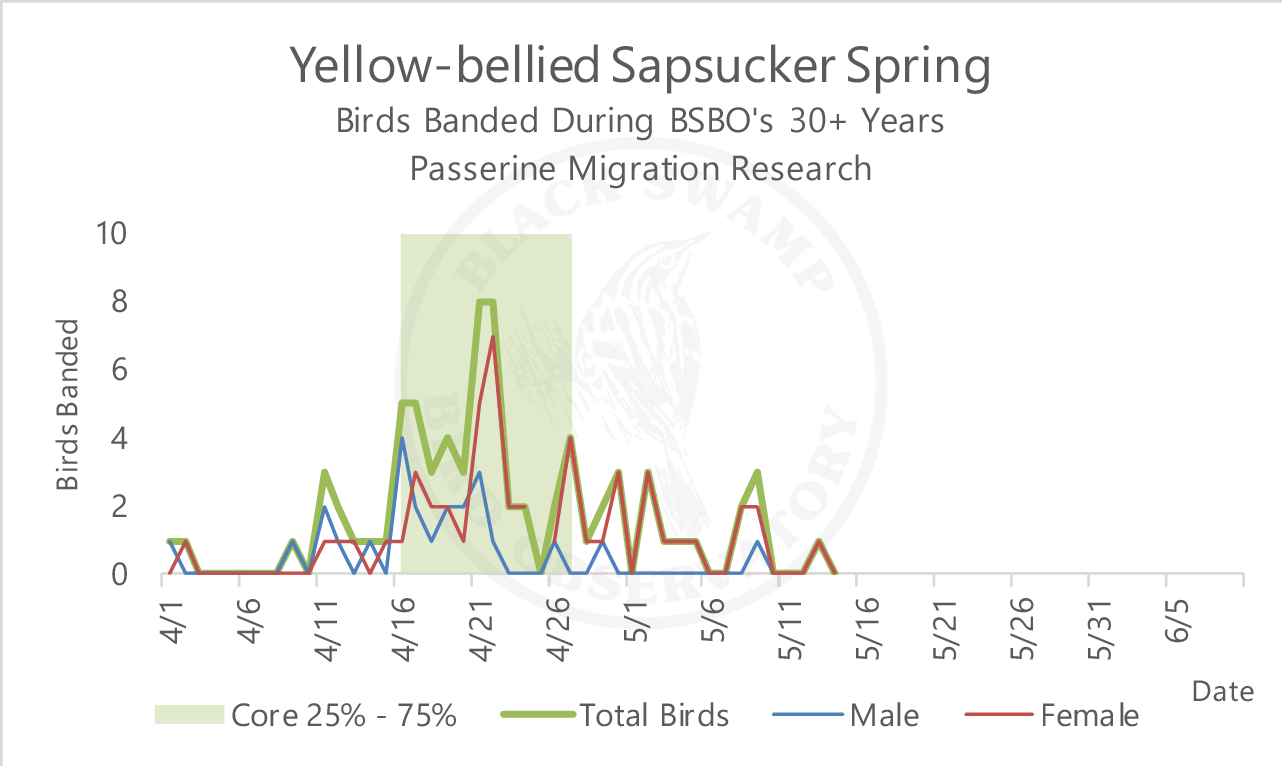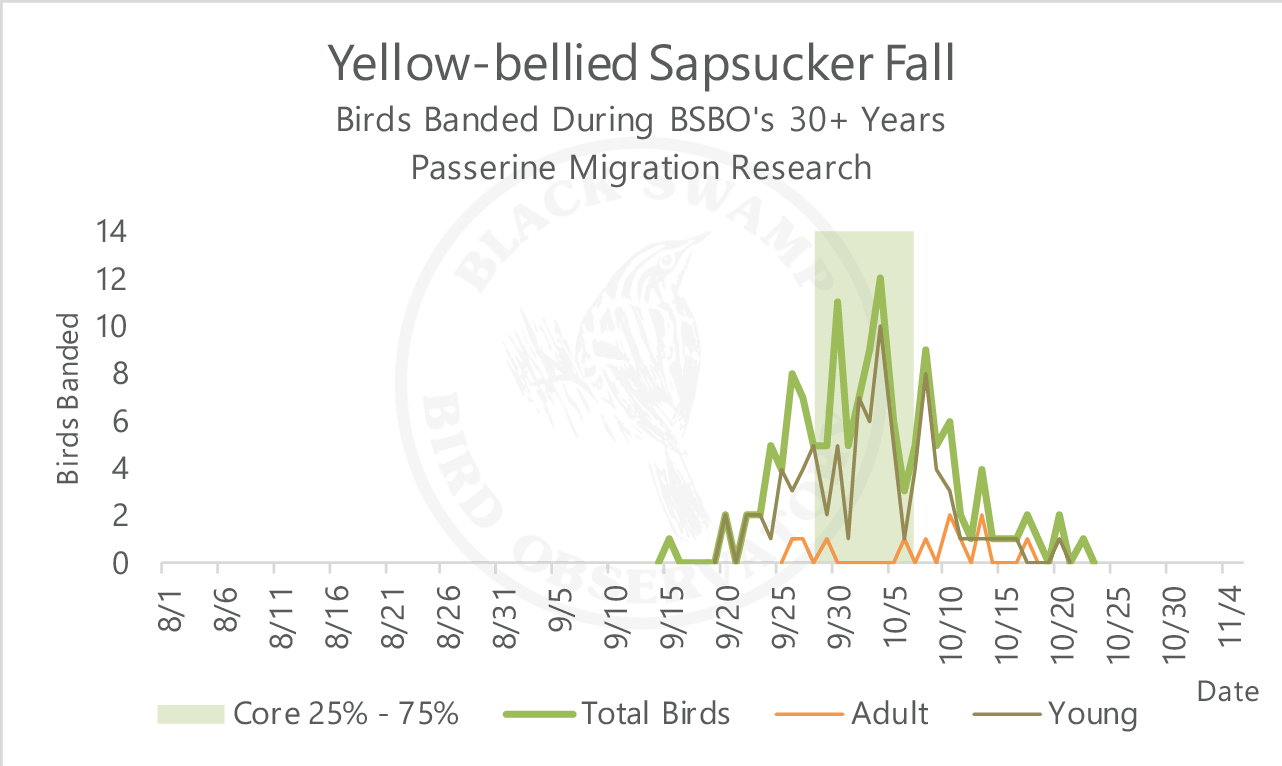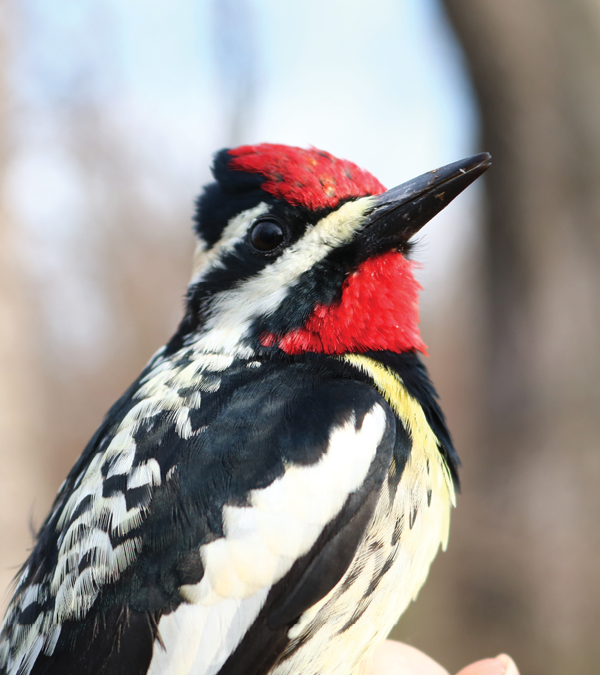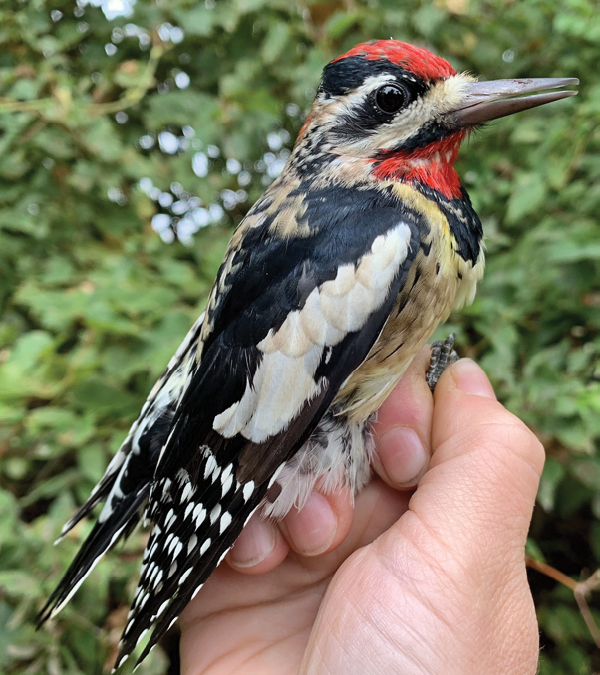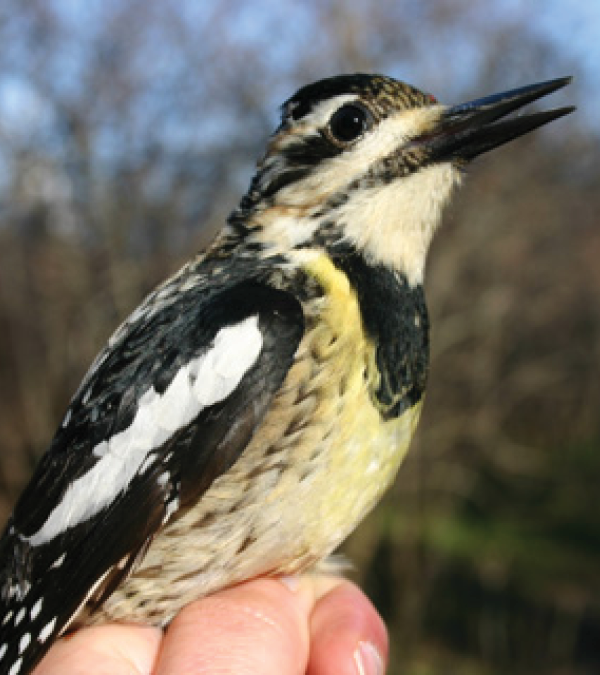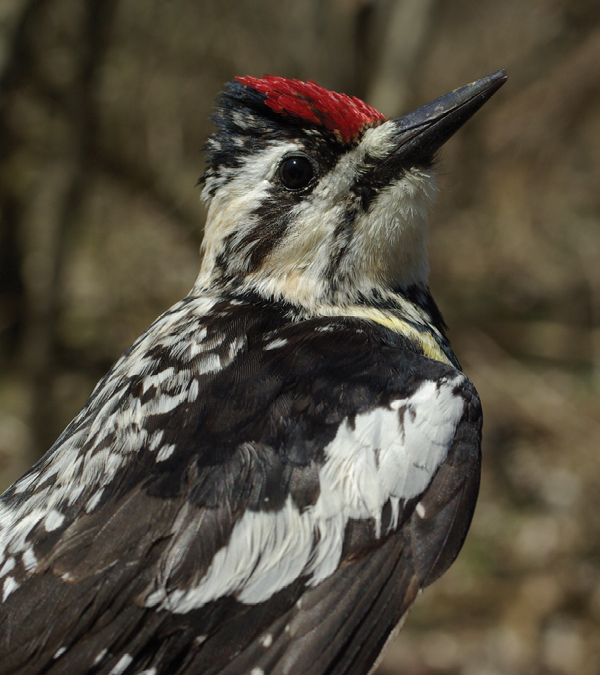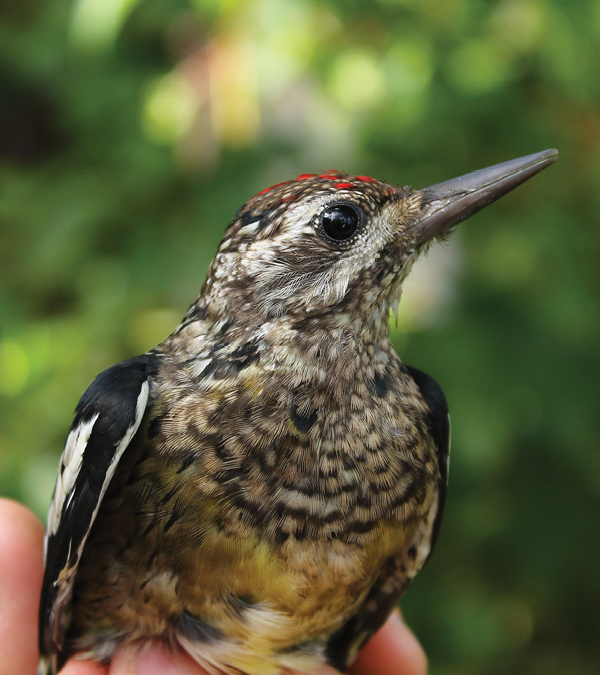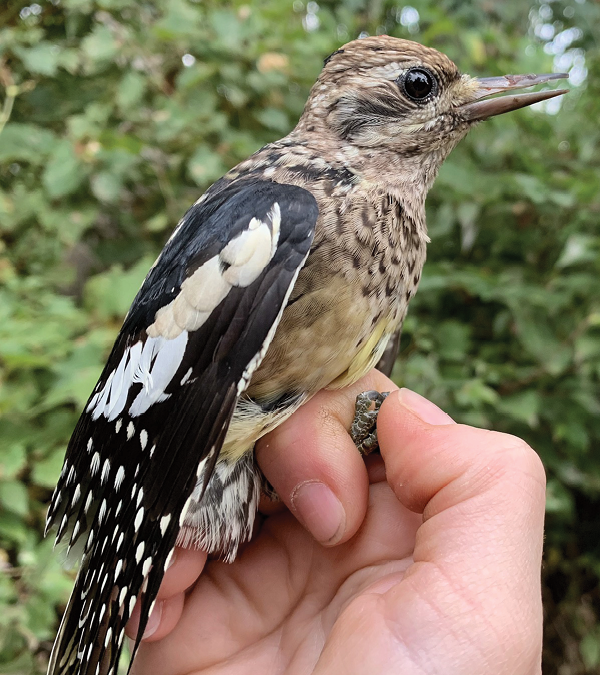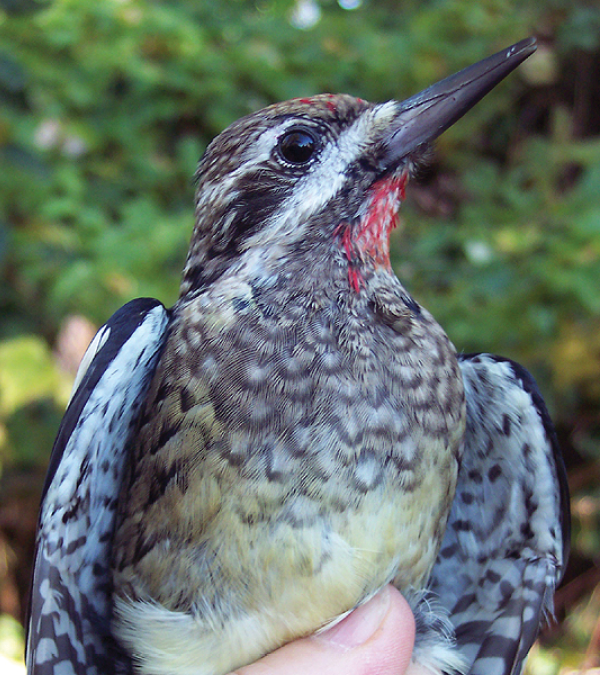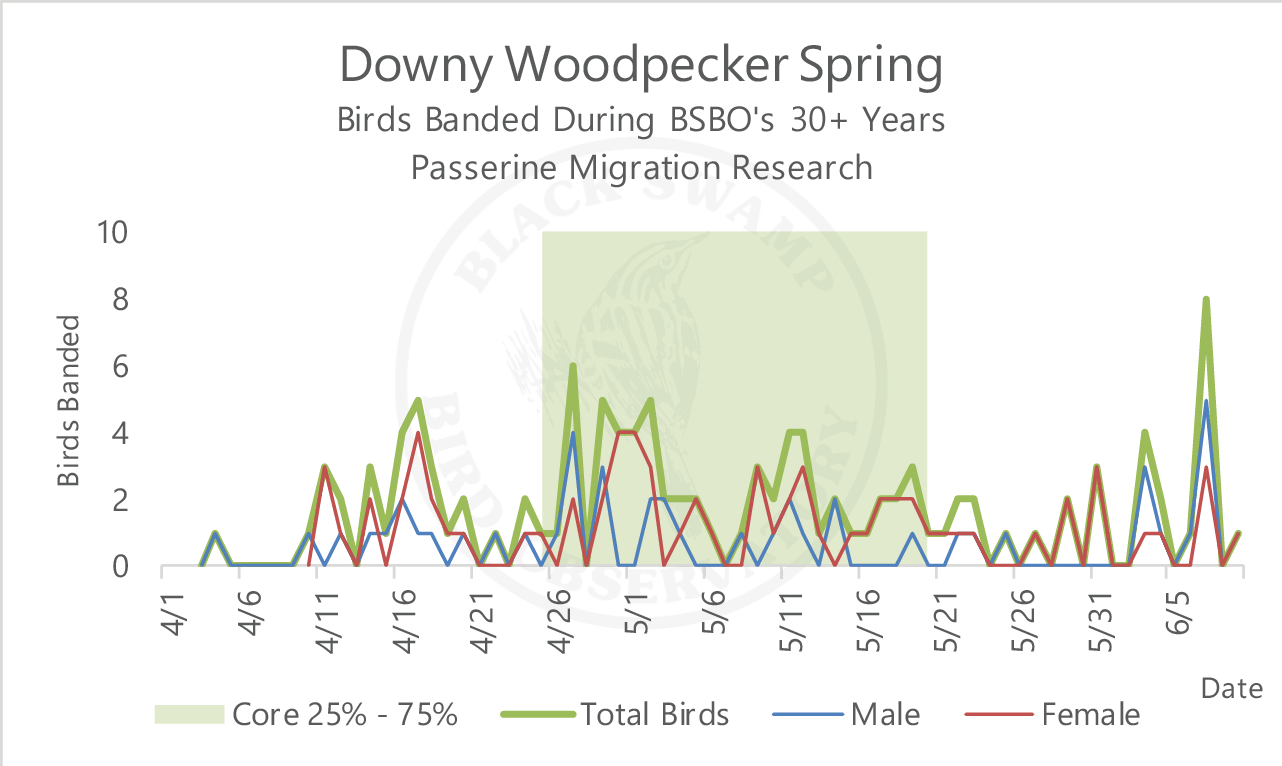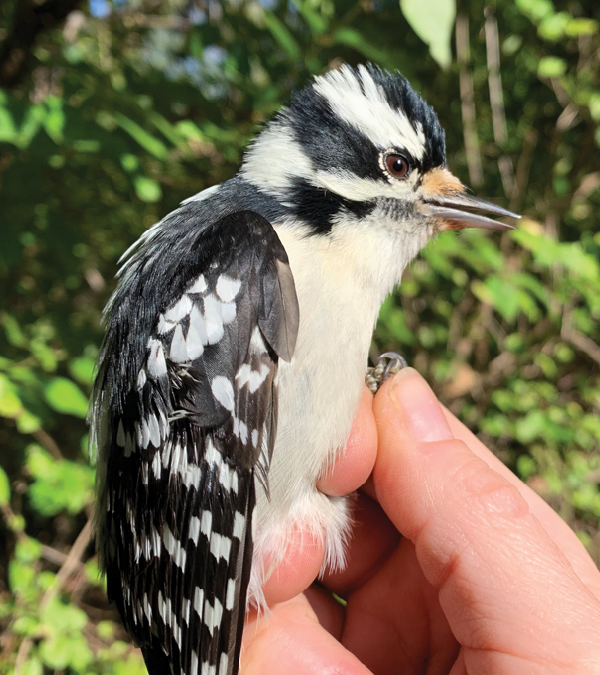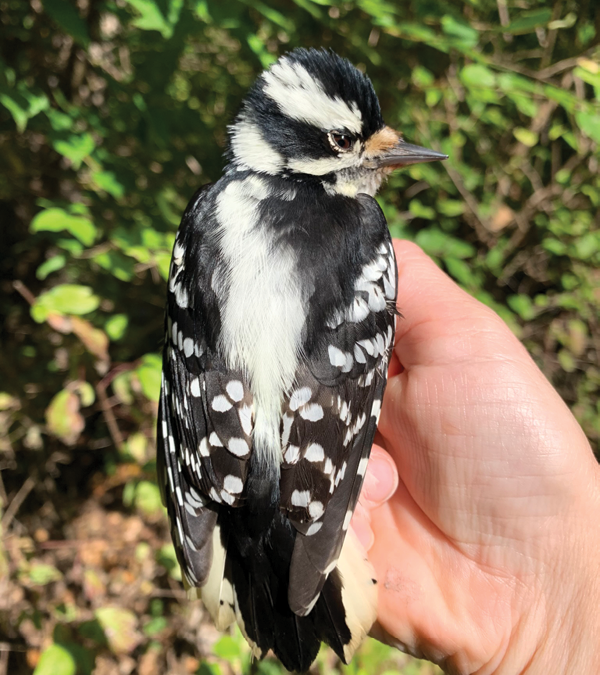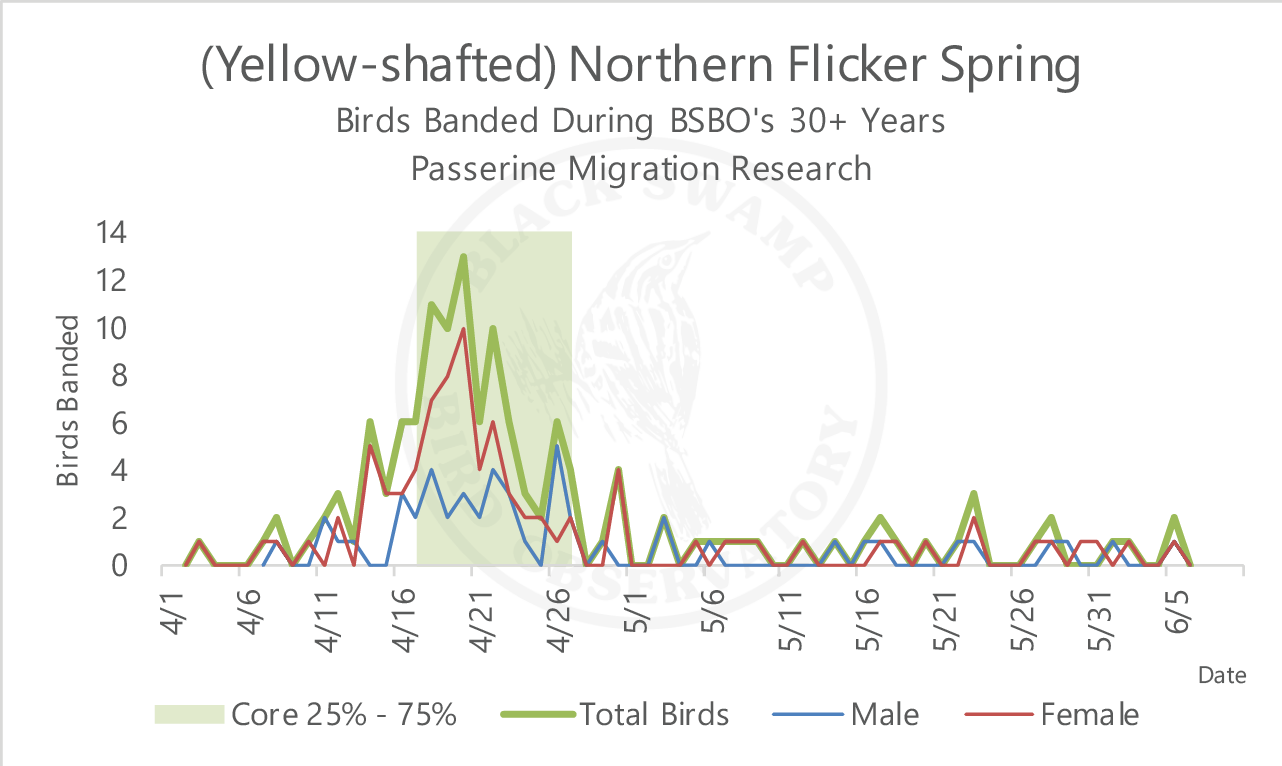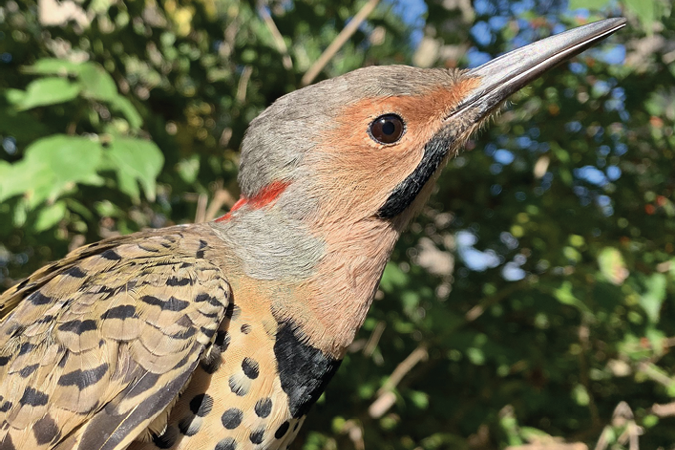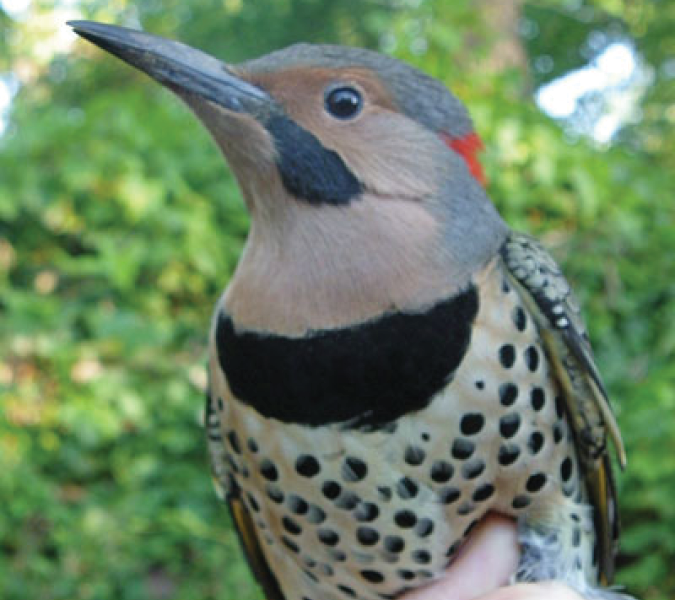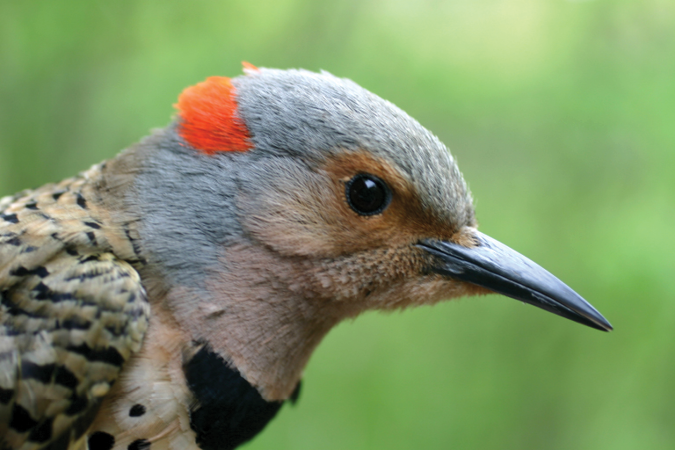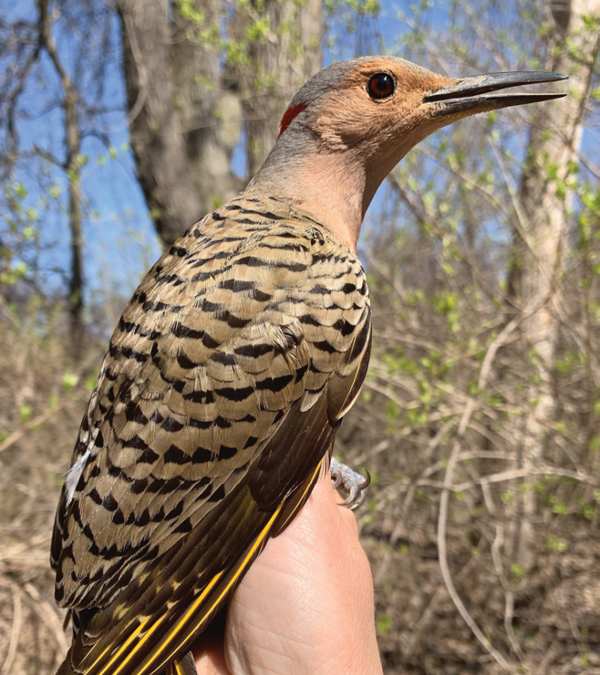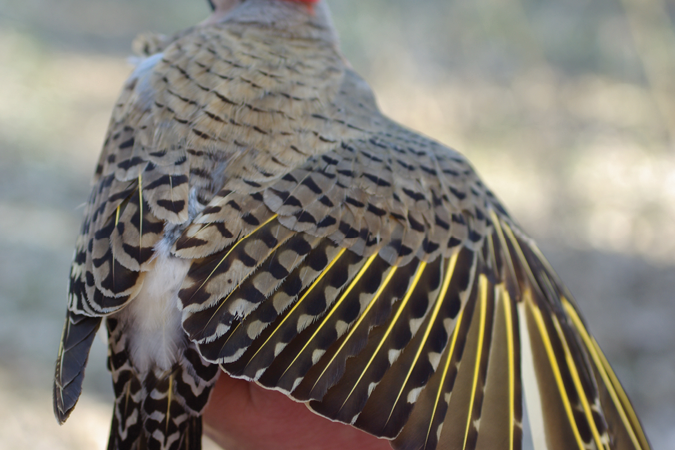Hawks Accipitridae
About hawks in nw ohio
As they are primarily diurnal migrants, the passage of hawks and other raptors is quite easy to witness as they soar over the landscape. Resistant as they are to crossing over the open waters of Lake Erie, Northwest Ohio can be a prime location for viewing spring hawk migration as these birds concentrate along the lake shore, skirting the lake and following air currents west and north into Michigan. Compared to songbirds relying on insects, food availability occurs much earlier for hawks allowing them to begin northern flights in early March for short-distance migrants. Long-distance migrants such as the Broad-winged Hawk - which winters in South America - are the last of the hawks to pass through, making large flights into early May.
During fall, hawk migration is much more protracted, occurring from September into November, depending on the species. While many birds may become funneled as they travel along the shores of Lake Erie in Michigan, as hawks approach Ohio they become spread out on a broad front. Some concentrations may occur, but in general, hawks are widely dispersed across the landscape as they travel south.
Due to the design and purpose of BSBO’s migration banding research, hawks are considered an incidental capture. Those captured are primarily Accipiters - the bird-hunting hawks - as they are prone to descending into the vegetation in pursuit of prey.
During fall, hawk migration is much more protracted, occurring from September into November, depending on the species. While many birds may become funneled as they travel along the shores of Lake Erie in Michigan, as hawks approach Ohio they become spread out on a broad front. Some concentrations may occur, but in general, hawks are widely dispersed across the landscape as they travel south.
Due to the design and purpose of BSBO’s migration banding research, hawks are considered an incidental capture. Those captured are primarily Accipiters - the bird-hunting hawks - as they are prone to descending into the vegetation in pursuit of prey.
Sharp-shinned Hawk Accipiter striatus
|
Alpha Code: SSHA Spanish: Gavilán de Pecho Rufo French: Épervier brun Band Size: M: 2 ~ 3, F: 3B ~ 3A ~ 3 NW Ohio Status: Migrant, Winter, Breeding-rare Total Banded in Spring: 107 Average Banded in Spring: 4 Total Banded in Fall: 18 Average Banded in Fall: <1 |
Call: sharp, excited kik-kik-kik-kik
Description: Broad, dark bands on long tail; square/sharp angle to tail. Adult birds slate-blue above with horizontal orange bars on whitish underparts; orange-red eye. Younger birds brown above with vertical brown streaks on whitish underparts; yellow eye, reddening with age. Male and female similar in appearance throughout the year, with female being larger than male. Spring Migration Timing: Birds begin moving through the region by mid-April, with peak movement of total birds occurring April 27 through May 5. |
Fall Migration Timing: Late and sporadic with birds passing through mid-September into November, and the bulk of total birds occurring September 25 through October 14.
Migration Habitat: When actively migrating, can be found soaring overhead nearly anywhere, but higher concentrations occur along the lake shore. Prefers open forests and forest edges to forage, but can also be found hunting at backyard feeders. Notes: Occurs more frequently than numbers would suggest due to research project being designed for passerines and near-passerines, not raptors. In addition to the study design, the larger size of female SSHA reduces their probability of capture compared to males (i.e. males are more easily captured and appear more often in the data). |
Woodpeckers Picidae
about woodpeckers in nw ohio
With short legs, stiff tails feathers, and a specialized skull, woodpeckers are well adapted for drilling holes into the sides of trees in search of hidden larvae. While not as obvious as some other families of birds, most woodpeckers can generally be easily sexed by the appearance or amount of red on the head, or by simple facial pattern differences.
Of Ohio’s woodpeckers, many can be found year-round chiseling through bark in a variety of forests and even visiting backyard feeders. While many of the woodpeckers are considered residents, winter often sees these birds disperse across the landscape and gather in areas where a reliable food source is available. Two migratory species also occur in Ohio - one traveling as far as Central America for the winter - and passing through in notable surges during spring and fall.
Of Ohio’s woodpeckers, many can be found year-round chiseling through bark in a variety of forests and even visiting backyard feeders. While many of the woodpeckers are considered residents, winter often sees these birds disperse across the landscape and gather in areas where a reliable food source is available. Two migratory species also occur in Ohio - one traveling as far as Central America for the winter - and passing through in notable surges during spring and fall.
Yellow-bellied Sapsucker Sphyrapicus varius
|
Alpha Code: YBSA Spanish: Chupasavia de Vientre Amarillo French: Pic maculé Band Size: 1B ~ 1A NW Ohio Status: Migrant, Winter-rare Total Banded in Spring: 94 Average Banded in Spring: 3 Total Banded in Fall: 144 Average Banded in Fall: 5 |
Call: nasally, mewing whine
Spring Description: Black and white above with dusky chevrons on white-yellow underparts. Red crown. Black and white striped face. Black bib. Vertical, white wingbar. Male with red throat. Female with white throat. Spring Migration Timing: Early, with some movement beginning in late March, and the peak movement of birds in April occurring 16-27. |
Fall Description: Adult male and female same as spring. Young birds with similar patterning but washed brown underneath, obscure facial markings, and flecks of red in crown. Young male usually without red throat.
Fall Migration Timing: Late and condensed, beginning in late September and ending in late October, with the peak movement of total birds occurring September 29 through October 10. Migration Habitat: A wide variety of forests (favoring deciduous trees in migration) ranging from large parks and wilderness areas to small woodlots and backyards. |
Downy Woodpecker Dryobates pubescens
|
Alpha Code: DOWO Spanish: Carpintero Velloso Menor French: Pic mineur Band Size: 1B NW Ohio Status: Present all year Total Banded in Spring: 146 Average Banded in Spring: 5 Total Banded in Fall: 649 Average Banded in Fall: 22 |
Call: a quiet pik and an excited, high-pitched rattle descending at the end
Description: Short bill. Black and white above with white underparts and bold white back. Face striped black and white. Black spots in outer white tail feathers. Male with red nape. Female without red. Spring Migration Timing: Begin moving around the landscape in March (away from selected winter sites) settling into territories by April. Consistently present throughout spring. |
Fall Migration Timing: Consistently present throughout fall with a surge of activity toward the end of August as young birds begin moving through more of the landscape.
Migration Habitat: Common in a wide variety of forests (predominantly deciduous) ranging from large parks and wilderness areas to small woodlots and backyards. |
(Yellow-shafted) Northern Flicker Colaptes auratus auratus
|
Alpha Code: YSFL Spanish: Carpintero de Pechera de Ala Amarilla French: Pic doré Band Size: 3 ~ 3B NW Ohio Status: Present all year Total Banded in Spring: 162 Average Banded in Spring: 5 Total Banded in Fall: 231 Average Banded in Fall: 8 |
Song: loud, rolling rattle rising and falling in volume; common calls include a loud kyeer and a rhythmic wik-a wik-a
Description: Brown and black above with black spots and bib on tan-white underparts. Gray crown with red nape. Tan face and throat. Yellow shaft and sheen to flight feathers and tail. Male with black mustache. Female without mustache. Spring Migration Timing: Early condensed movement, with peak activity occurring April 17-27. |
Fall Migration Timing: Fairly prolonged, with activity spanning mid-August into late October, and the peak of total birds occurring
September 25 through October 9. Migration Habitat: Ground forager of a wide variety of open forests and semi-open areas, including woodlots, groves, and backyards. |
